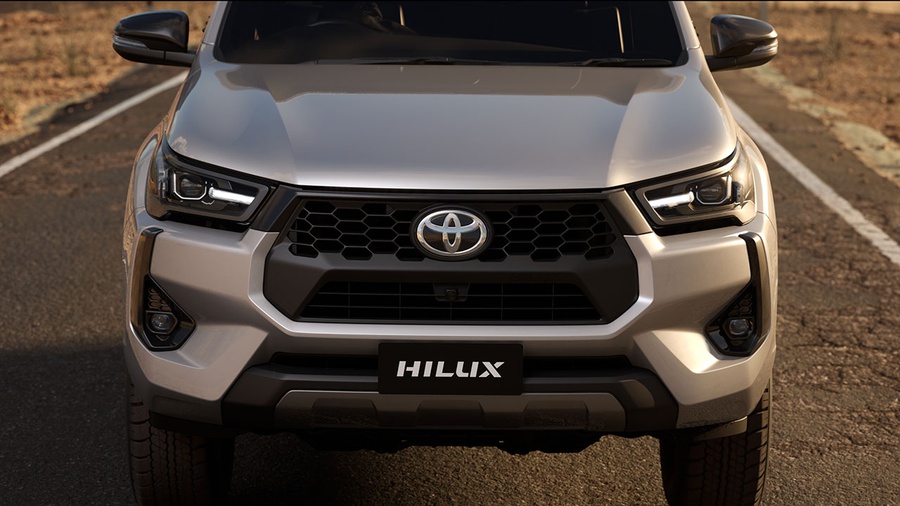Toyota Australia has unveiled the third consecutive facelift for the eighth-generation Hilux, one of their best-selling midsize pickups. This updated model features styling enhancements, improved technology, and the introduction of 48-Volt technology to the 2.8-liter turbodiesel engine. Toyota's aim is to stay competitive in the Australian market, particularly against its main rival, the Ford Ranger, which took the top-selling vehicle title in Australia last year after a fierce competition.
While the Japanese and European versions of the 2024 Toyota Hilux remain virtually unchanged in terms of appearance, the Australian model boasts a redesigned front end. The bumper has been sculpted with a new octagonal grille, complemented by revised intakes and an aluminum-style skid plate. The rest of the bodywork remains consistent with the outgoing Hilux, but the tailgate now features dampers for smoother operation.
The grille and bumper finish vary depending on the trim level. The entry-level WorkMate includes a black honeycomb mesh grille, while the SR incorporates a silver-colored lower bumper finish. The SR5, on the other hand, showcases a black upper grille, dark-tinted LEDs, and gloss-black accents, including fog light bezels, mirror caps, and door handles. Toyota has not released photos of the high-spec Rogue and performance-focused GR Sport models, which are likely to retain their existing body kits.
The highlight of the 2024 model year is the addition of 48V technology to the 2.8-liter four-cylinder turbodiesel engine, standard in the Rogue and SR5 trims, and optional for the 4×4 SR. It's important to note that Toyota refrains from using the term "hybrid" or related emblems for mild-hybrids, reserving those for self-charging and plug-in hybrid setups.
This mild-hybrid system comprises a belt-driven electric motor/generator, a small lithium battery, and a DC/DC converter, enabling a stop/start system. Toyota claims that this electrification improves fuel economy by 6-10%, depending on the trim, while also reducing noise, vibration, and harshness.
The electrified 2.8-liter turbodiesel engine maintains its power output at 150 kW / 204 hp and 500 Nm of torque. Although Toyota has not provided specific details on how the 48V technology impacts power and torque, in the EU-spec model, it adds up to 12 kW / 16 hp and 65 Nm. Additionally, all mild-hybrid Hilux models come standard with the Multi-Terrain Select system, offering six driving modes for various terrains.
The Hilux range continues to offer other powertrain options, including the existing 2.8-liter and 2.4-liter diesels, as well as the 2.7-liter gasoline engine. These engines are available with a choice of manual or automatic transmissions in both 4×2 and 4×4 configurations.
In terms of equipment, all SR grades now include two front and four rear parking sensors, while those equipped with the 48-Volt system benefit from dual-zone automatic climate control, smart entry/start, auto power windows, and carpet floor mats. Furthermore, the higher-spec SR5, Rogue, and GR Sport trims are now equipped with a wireless charging pad and two rear USB-C ports.
The updated Toyota Hilux is set to arrive in Australian showrooms in March 2024. Pricing starts at AU$26,475 (US$17,277) for the entry-level Hilux Workmate 4×2 single-cab model and goes up to AU$74,310 (US$48,495) for the flagship Hilux GR Sport 4×4 dual-cab version. Notably, the trims featuring the 48-Volt mild-hybrid system are priced between AU$590-1,605 (US$385-1,047) higher compared to their non-electrified predecessors from last year.
.jpg)

